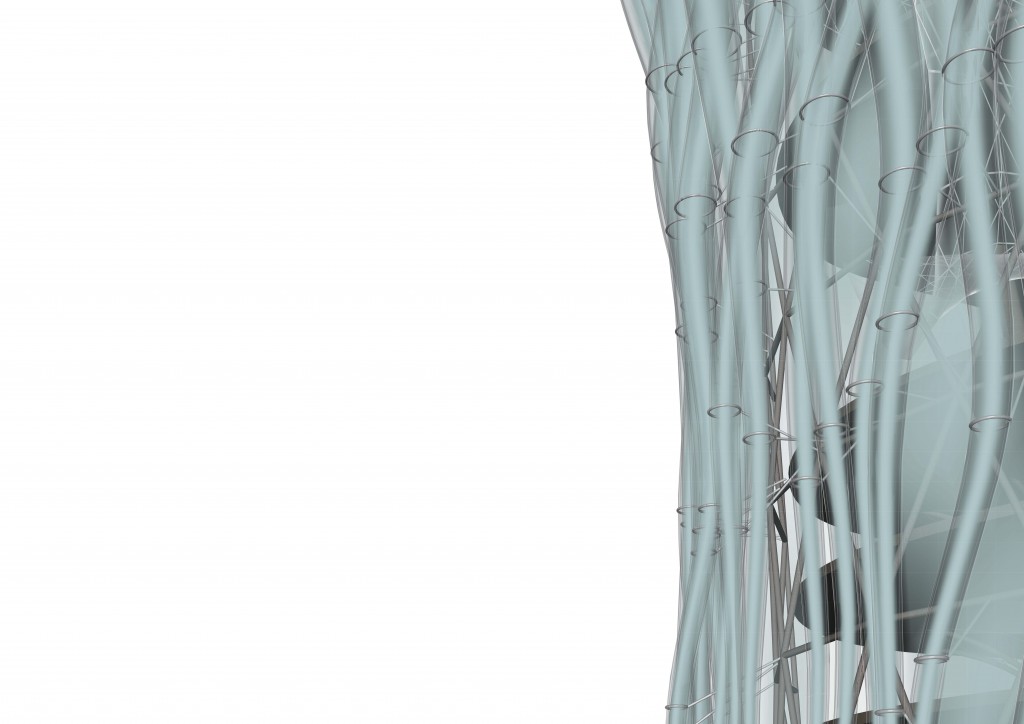TARGET
Designing an educational and research platform in the 22@ district of Poblenou.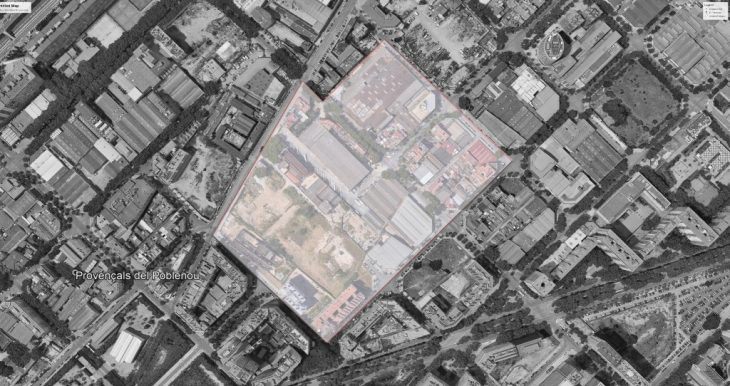
INTENTIONS and GOALS
The Goal was to Create a RESPONSIVE and PERFORMATIVE instrument that will be by itself an advanced educational tool.
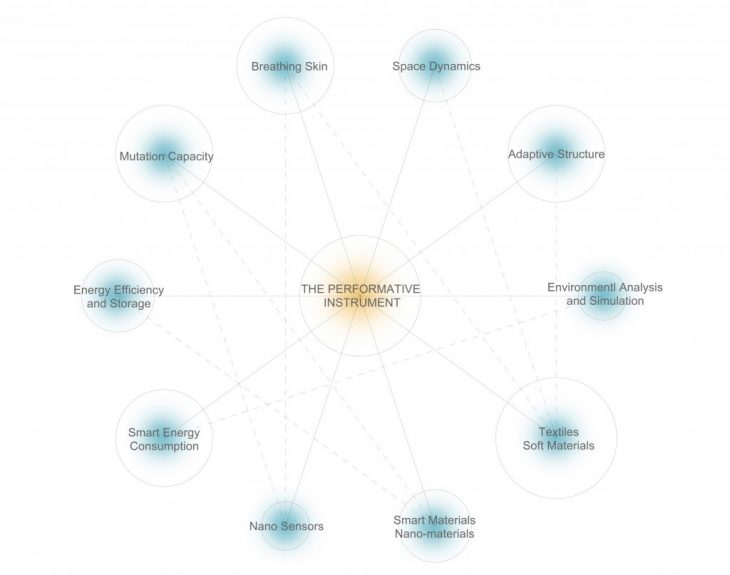
PERSONNAL AGENDA part of a CLUSTER AGENDA
Cluster Agenda:
STRUCTURE + SKIN
Education as a living Laboratory within the TOWER OF INNOVATION
Consists of an Interaction between various systems in a building and the climates they generate.
The Tower of Innovation strives to create a Self- Sufficient environment that allows for the advancement of Innovation and the exchange of knowledge.
The tower creates ambient micro climates that contribute to air purification as well as indoor environmental quality.
The various systems collaborate together harnessing various particles and elements found in air, water, mist, fog, temperature, sunlight and humidity.
My Personnal Agenda:
A vertical skin system made of Silk tubes, used as a cooling system by evaporation.
Water is collected, channeled, and its speed and flow is controlled by air pumping.
Other Agendas part of the Cluster:
. A second skin system consists of two layers of ETFE pneumatic cushions. The interior layer acts as a solar chimney and provides ventilation. The outer layer engages solar heat gain and provides defuse sunlight.
. An interior pavilion aims to create an ideal thermodynamic environment that explores relationships between humans and their material, physiological and territorial atmospheres.
. Bamboo serves as a structural system that provides for ideal structural stability and proves to be an ideal because of its material properties, its growth rate and ability to easily be harvest as a construction material.
PERSONNAL AGENDA DESIGN PROCESS
- Geometry
- Materiality
- Mechanism
- Assembly
GEOMETRY TESTING

MATERIALITY
Chosen Material: SILK
Coating: Hydrophobic coating TECNADIS – nanoparticle-based coating that repels liquid, yet still allows the underlying material to breathe.
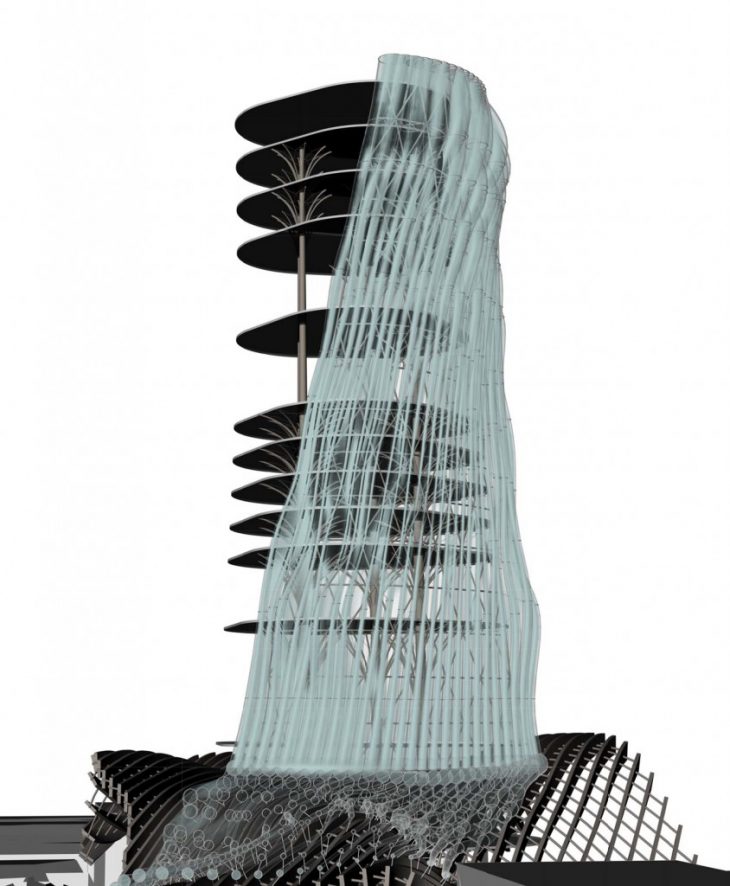
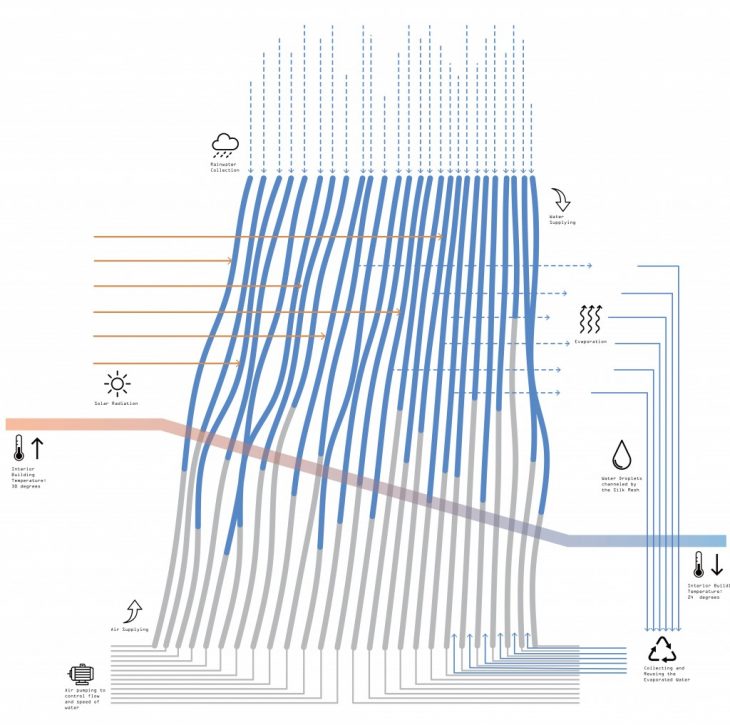
. Rainwater is collected on the roof, and supplied through the Silk pipes.
. Due to solar radiation hitting and heating the surface of the silk, the water circulating inside is evaporating towards the interior of the building, cooling it.
. This vapor is then condensed on the inner surface of the skin, and the resulting droplets are being channeled by the silk mesh all the way down.
. These droplets are again collected on the bottom of the tower, used for other needs (irrigation, …) or pumped up and reused for cooling when it is needed (during warm days when there is no rain)
. Air is also being pumped up to control the speed and flow of the water as desired.
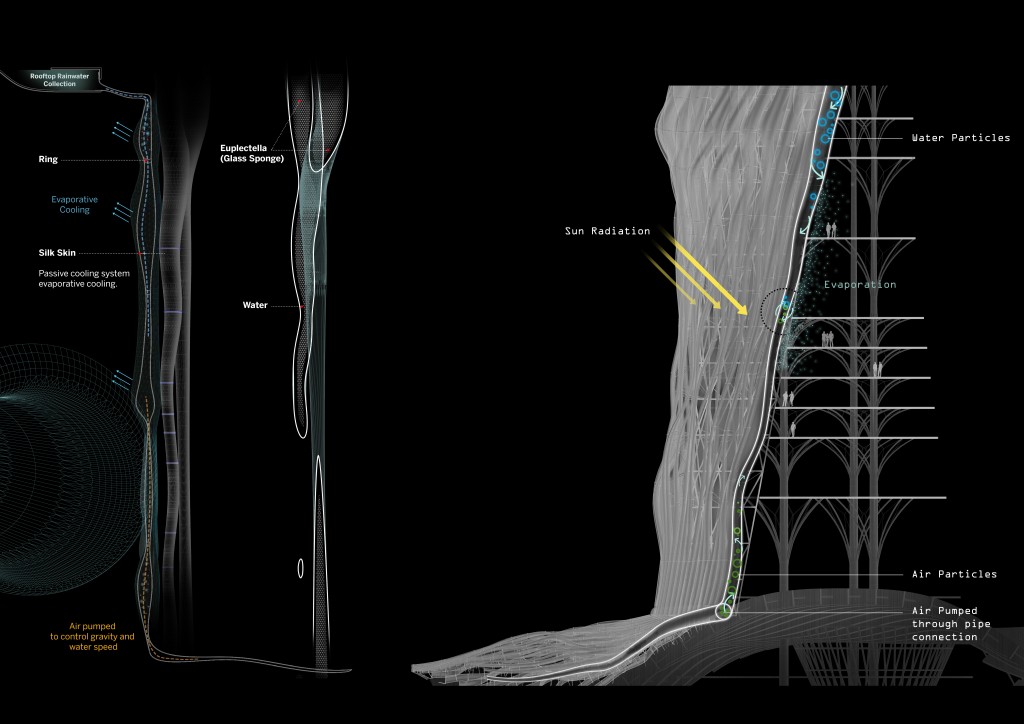
Rings are controlling the movement and spanning of the Silk Tubes. Linked to corresponding nodes and sensors, these rings move and expand following the Sun’s direction and/or needs of the users.
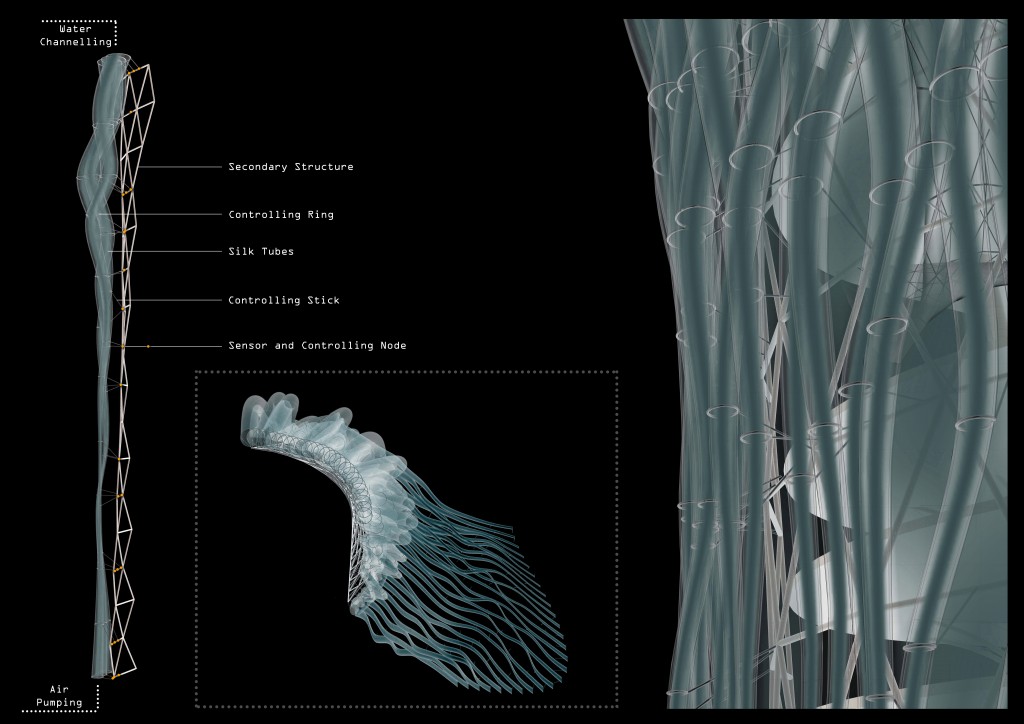
Using a tubular façade cooling system that operates by evaporation, my goals were to maximize the sunlight hours on the skin system and to provide the maximum area of surface to optimize the evaporation, while trying to block the views the least possible, and not having the skin span too far from the façade.

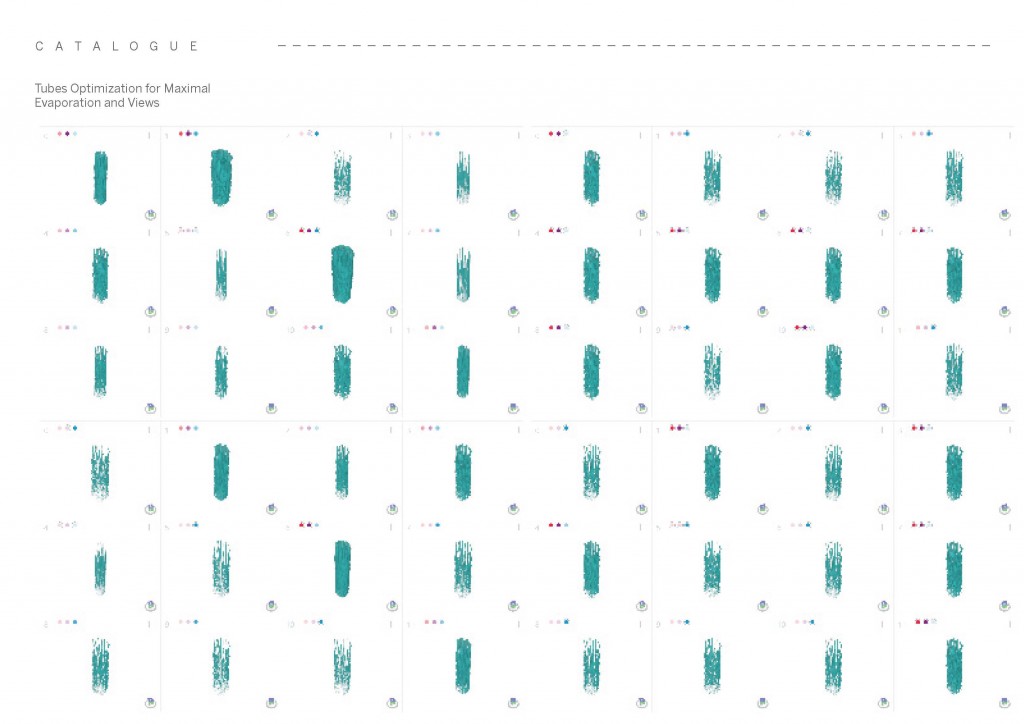
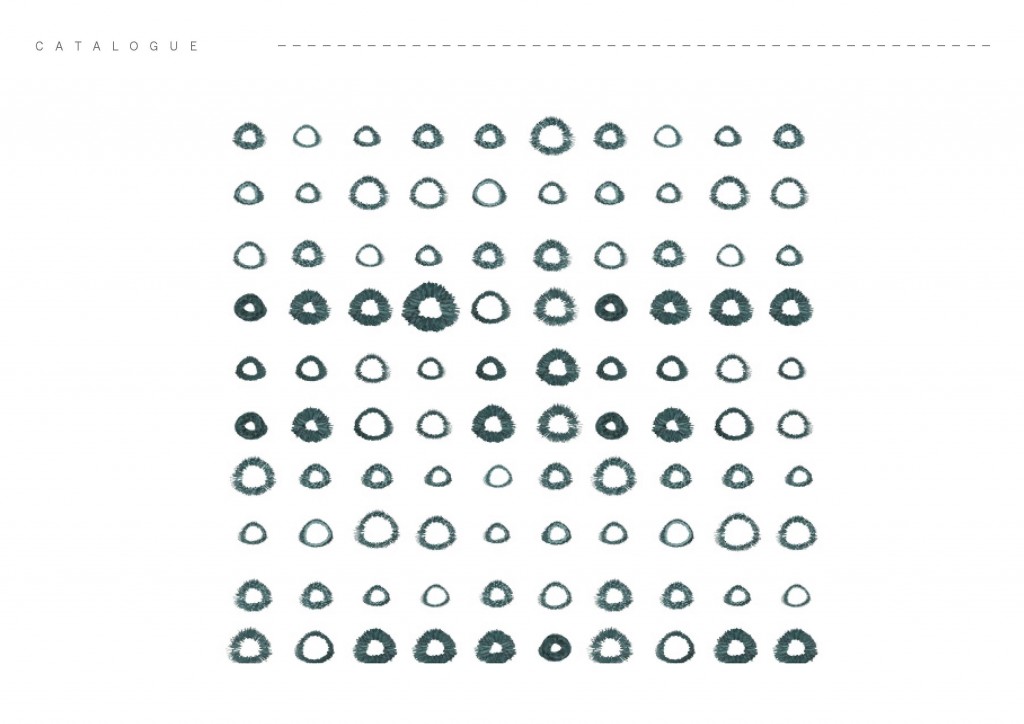
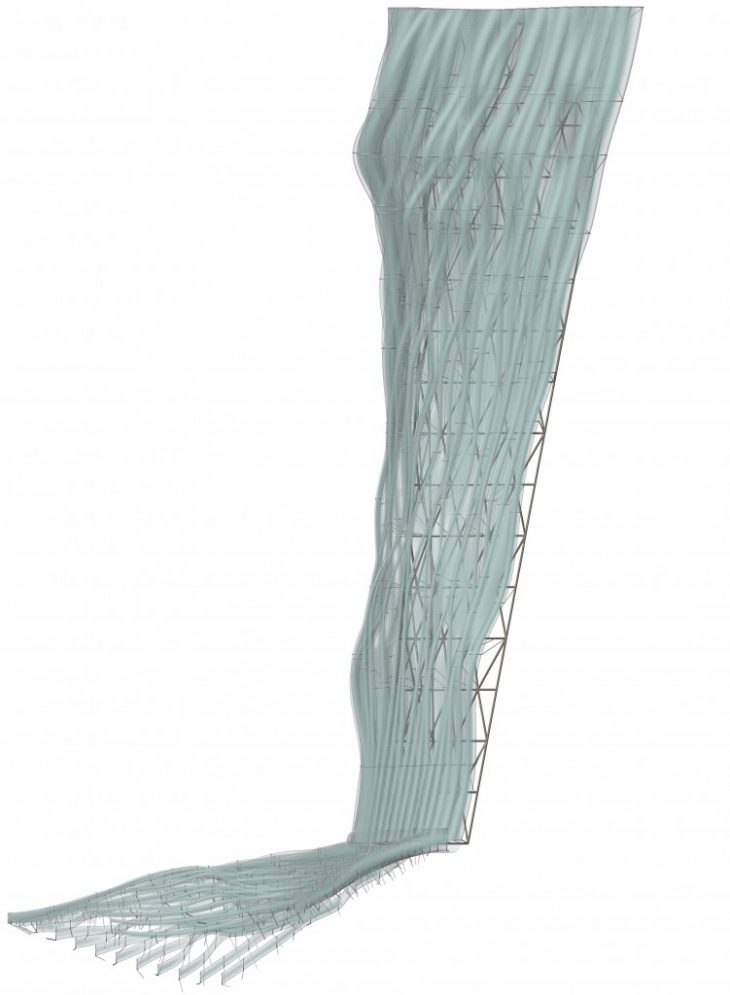
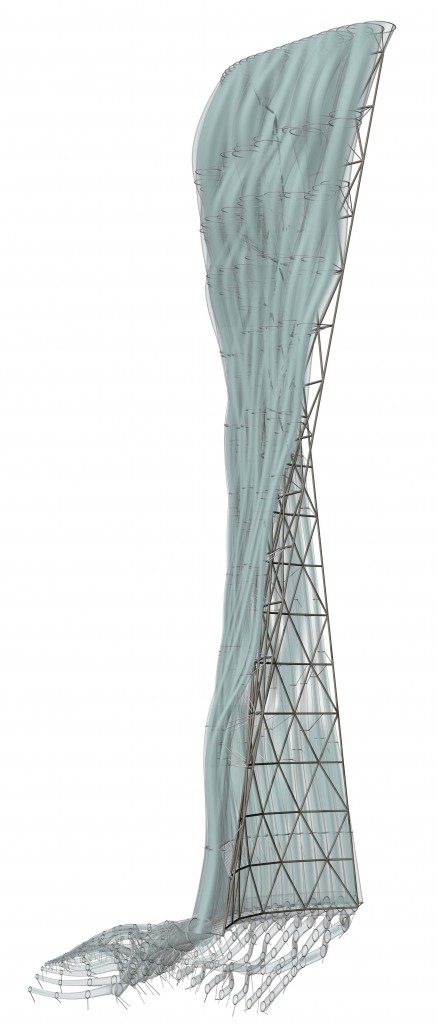
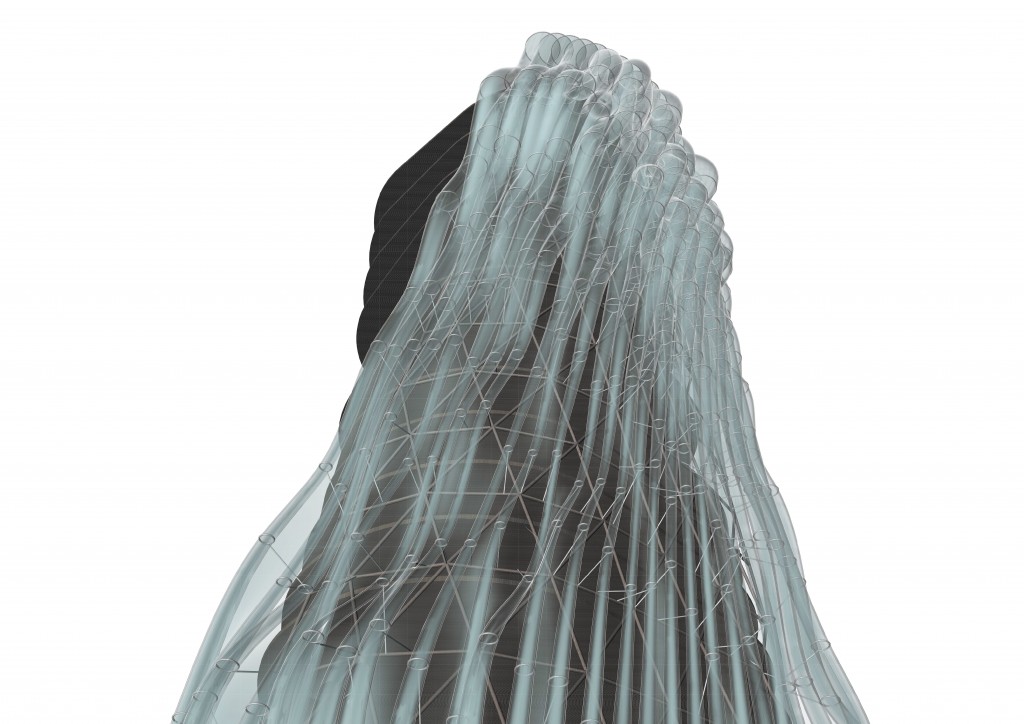
LEARNING METHODOLOGY
Defining Strategies to integrate the building into the experiential learning
. Integrate a “smart” building management system into public displays
. Reveal efficient mechanical systems and technologies used

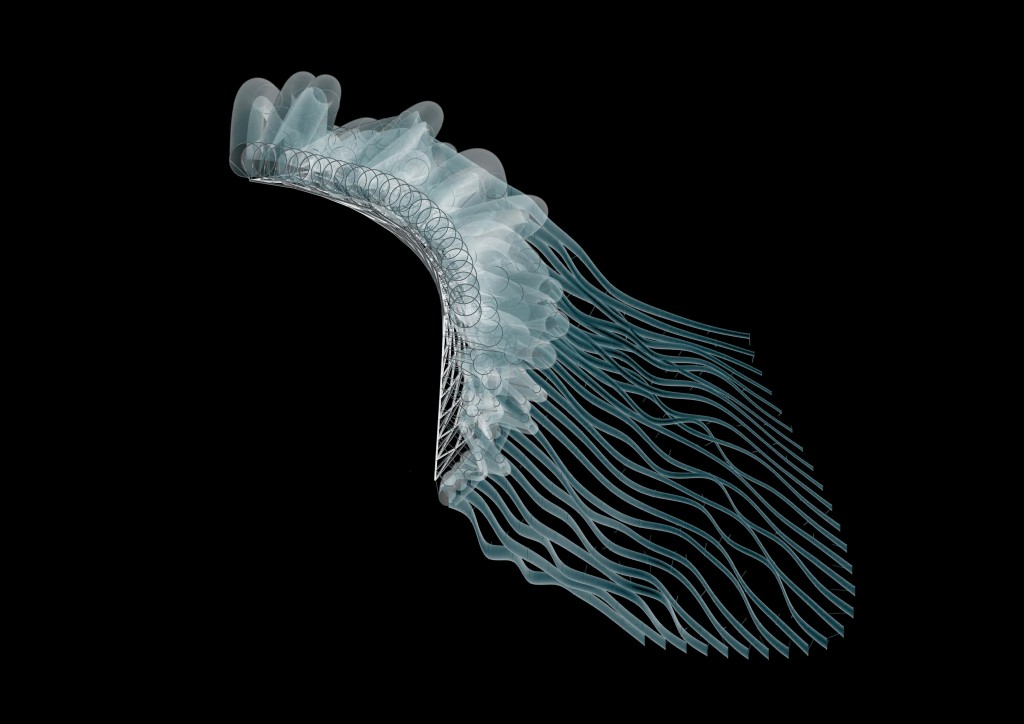
RS.II – Self Sufficient Buildings | IaaC | MAA01 2017/2018
Student: Stephie Moukarzel
Tutors: Enric Ruiz-Geli | Mireia Luzzaraga
Assistants: Zrinka Radic | Mohamad Rachid Jalloul
